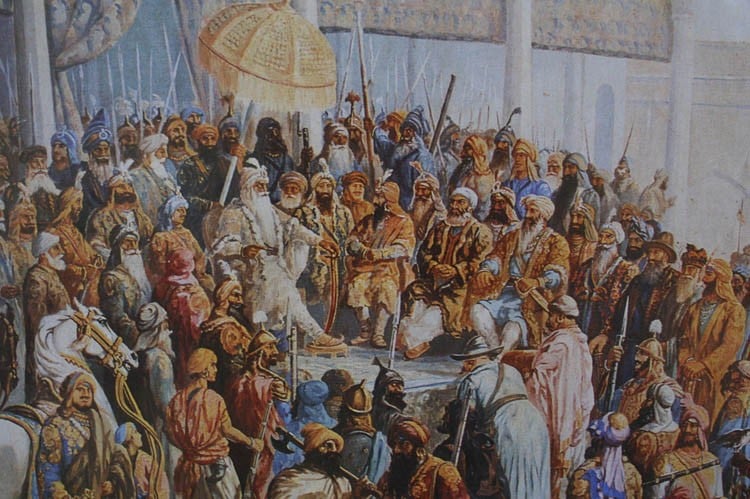
Understanding the development of state and society in the Punjab against the backdrop of codification of laws and executive control over judicial functions

In the historiography of South Asia, the struggle for independence from British rule forms a central narrative. Within the struggle for independence by the Indian National Congress and the demand for a homeland for Muslims by the All India Muslim League, one interesting element stands out: that of the persistent British loyalty of the Punjab.
Being one of the largest and most important provinces in British India, it was critical that the people of the Punjab participate in the national movement. However, both the Indian National Congress and the Muslim League failed to make any inroads in the province, and till the very end the Punjab remained steadfast in its support for British rule. The most important political party in the Punjab till the 1946 elections where the religious rhetoric of the Muslim League took over, was the Unionist Party which included members of all the three main religious communities in the province -- Hindu, Muslim and Sikh.
The Unionist Party ruled the province since the 1937 elections, and unlike the rest of British India gave some hope for peaceful religious co-existence, till of course the holocaust of the partition of 1947 burnt to ashes the rich multi-cultural and multi-religious mosaic of the Punjab.
One factor, which has been usually cited as a reason for the pro-British tendencies of the people of the Punjab, is that the British impressed the concept of the ‘rule of law’ upon the people of the area. The pacification of the Punjab, the promulgation of codified law, the setting up of the police and jails, and the erection of a formal system of justice, are given as reasons why the Punjabis preferred and supported British rule. So did the British establish the idea of the ‘rule of law’ in the Punjab? And to what extent did the law and order and legal situation change during British rule? These are questions which merit closer examination, as through them we can better understand the development of state and society in the province.
Under Maharaja Ranjit Singh, while justice and the concept of the rule of law were not alien, there was no codification of laws and executive control over judicial functions was strong. Sir John Malcolm who visited the Punjab under Ranjit Singh noted: "The administration of justice in the countries under the Sikhs, is in a very rude and imperfect state…having no fixed code, they appear to have adopted that irregular practice, which is most congenial to the temper of the people, and best suited to the unsteady and changing character of their rule of government."
Sir John noted that the system at the local level was that of the ‘Panchayat’ which was based on the arbitration of five village elders. The decision of the Panchayat was almost always accepted which often included a fine as a punishment. "The punishment, however, is never capital," Sir John noted. Interestingly, Sir John Malcolm noted that the Sikh priest [garanthi] from whom he gathered this information was quite happy and their system was better than the British one which was, ‘he said, tedious, vexatious, and expensive, and advantageous only to clever rogues.’
Above the Panchayat were the Kardars in the villages and Nazims in the cities, who would hear appeals, again mainly on the basis of customary law. The highest court normally available -- both in civil and criminal cases -- was the Sadar Adalat at Lahore, beyond which there was only appeal to the Maharaja himself where the litigant could come to the palace or stop the Maharaja on his tour of the city with the cry ‘Dohai, Maharaja, Dohai,’ (Mercy, Maharaja, Mercy)’ and the Maharaja would personally hear the petition and either decide it there and then or pass it on to one of his ministers.
However, later it seems that Maharaja Ranjit Singh realised the benefit in having a code and appointed Bahadur Singh Hindustani in 1828 to create a code of criminal and civil code and Prince Sher Singh was given judicial training to oversee the process. But apparently this code was still in embryonic stage by the time the Maharaja died in 1839.
After the first Sikh War in 1846 and the establishment of the Residency in Lahore, the British tried to affect the administration of justice in the kingdom. The Centre Regency Council became the final court of appeal in the kingdom and regularly heard appeals. British officers were also stationed in other parts of the kingdom to report on the state of law and justice and reports were regularly sent to the Regency Council about the work and efficiency of the judicial administration. Then in 1847, under the leadership of Sardar Lehna Singh, "an assembly of 50 Sikh elders, heads of villages…sat for some months at Lahore, in the autumn of 1847, to frame a code of simple law for the guidance of the Sikh people."
Read also: The British and ‘rule of law’ in the Punjab-II
Hence, by the time of the annexation of the Punjab in March 1849 there existed some rudimentary form of justice in the Punjab, but it was largely based on personal choices and whims of the rulers. Furthermore, since the demise of Maharaja Ranjit Singh, local sardars had gained power and control of the Lahore Durbar had been significantly reduced. The Regency Council set up for Maharaja Dalip Singh was also torn by internal conflict and therefore the situation in the countryside began to rapidly deteriorate.
To be continued